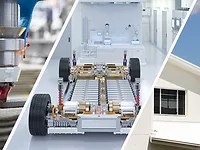Middle East Presents Growth Opportunities for Chemical Industry
DUBAI – Sometimes, healthy competition is good. For the Middle East refining and petrochemical industry, a changing global feedstock mix and increasing competition in the United States, driven by the availability of cheaper gas feedstock, is reinforcing previous decisions by Middle East petrochemical producers to continue investing in new technology. The industry is also diversifying its feedback mix and expanding its product slates to include more higher-value intermediates.
These trends, among others, in the Middle East’s fast-growing chemical industry are part of the latest analysis by IHS Inc. Results of the analysis were discussed at length at the IHS Forums in Dubai at the end of April.
In its analysis, IHS says investments will drive chemical exports from the Middle East and will help the chemicals industry grow faster than other key industries in the region, including oil and gas, transportation, defense, banking, and automotive. China will be the biggest market for these Middle East exports, which will grow by more than 8% year-on-year in 2016, representing an increase of more than 6% growth above 2013 chemical export figures.
“The Middle East continues to be a dominant force in petrochemical production,” said Dave Witte, General Manager of IHS Chemical and Senior Vice President at IHS. “The region faces an opportunity to pivot to strategies that leverage their growing technological expertise, expand their global footprint and seize upon commercial advantages. Additionally, it enables Middle East producers to continue building on their leading position in commodity production and expand into intermediates and higher-value products.”
“Second Generation” of Chemical Industry
“This is a positive transition that many maturing industries face, as technology, competition and market dynamics mandate change,” Witte said. “We are witnessing the beginning of the ‘second generation’ of the Middle East chemical industry … Investments are likely to differ significantly from the recent past, but will help move the industry in a new direction.”
One such example of this Middle East diversification strategy, which will also expand job creation in Saudi Arabia, is Sadara, a $20-billion joint venture between Saudi Aramco and Dow Chemical, which will incorporate liquid feedstocks as well as gas to feed its cracker at Al Jubail. Sadara’s complex, scheduled to be online in 2015, will include more than 20 process units making amines, glycol ethers, isocyanates, polyether polyols, polyethylene, polyolefin elastomers, and propylene glycol. SABIC and ExxonMobil Chemical, meanwhile, are investing $3.4 billion to build a rubber and elastomers complex that will introduce ethylene propylene diene monomer rubber, polybutadiene rubber, and carbon black production to Saudi Arabia.
Looking for a reprint of this article?
From high-res PDFs to custom plaques, order your copy today!






